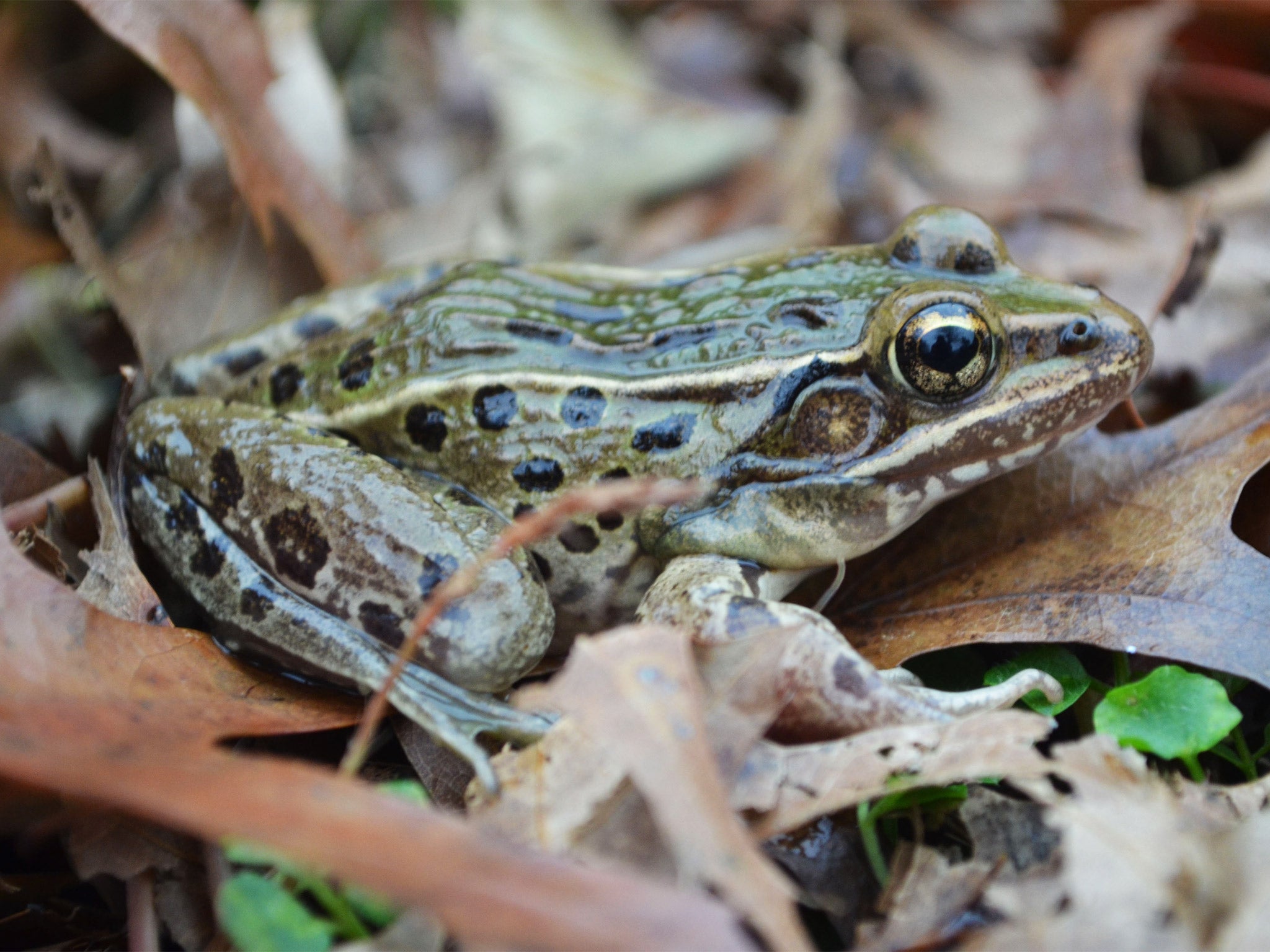New species of leopard frog discovered in New York City
Rana kauffeldi lives on Staten Island

A new species of frog has been discovered living in New York City, one of the most densely populated areas in the world, and perhaps the least likely place to find a hidden amphibian.
The leopard frog was first found living in the shadow of the Statue of Liberty in the ponds and wetland of Staten Island, a short ferry trip from the urban sprawl of Manhattan.
Scientists have named the species Rana kauffeldi in honour a local wildlife expert called Carl Kauffeld who suggested as long ago as 1937 that there may be an unidentified species of frog in the area.
However, the frog – which looks almost identical to two other species of leopard frog living nearby – was only identified with the help of modern genetic techniques, aided by an acoustic analysis of its distinctive mating call.
Jeremy Feinberg, a doctoral student at Rutgers University in New Jersey, said it was the unusual “chuck” call of the frog during the breeding season that first alerted him to the possibility of it being a different species.
“I’d spent three years studying leopard frogs in New Jersey and so I was familiar with how the call was supposed to sound like. After I spent some time on Staten Island I knew straight away that the call there was a different one entirely,” Mr Feinberg said.
Although Kauffeld, who died in 1974 aged 63, thought there may be a new species of leopard frog living near New York City, his 1937 scientific paper describing the possibility “fell short” of proof, Mr Feinberg said.
“After some discussion, we agreed that it just seemed right to name the species after Carl Kauffeld. We wanted to acknowledge his work and give him credit where we believe it was due even though it was nearly 80 years after the fact,” Mr Feinberg said.
DNA tests have confirmed that R. kauffeldi, which will now be commonly known as the Atlantic Coast leopard frog, is a distinct species from the two other species of leopard frogs that live to the north and south of New York City respectively, according to the study published in the online journal Plos One.
The new frog is described as having a mint-grey to light olive green skin with dark spots. Since its initial discovery, it has been found to inhabit a coastal range extending from Connecticut in the north to Virginia and North Carolina in the south.
“It is incredible and exciting that a new species of frog could be hiding in plain sight in New York City and existing from Connecticut to North Carolina,” said Professor Joanna Burger of Rutgers University.
“The process of recognising, identifying and documenting a new species is long and arduous but it is important for our understanding of the wide-ranging wildlife in urban as well as other environments,” Professor Burger said.
Professor Brad Shaffer of the University of California, Los Angeles, said: “If there is a single lesson to take from this study it’s that those who love nature and want to conserve it need to shut down their computers, get outside an study the plants and animals in their own backyards.”
Join our commenting forum
Join thought-provoking conversations, follow other Independent readers and see their replies
Comments